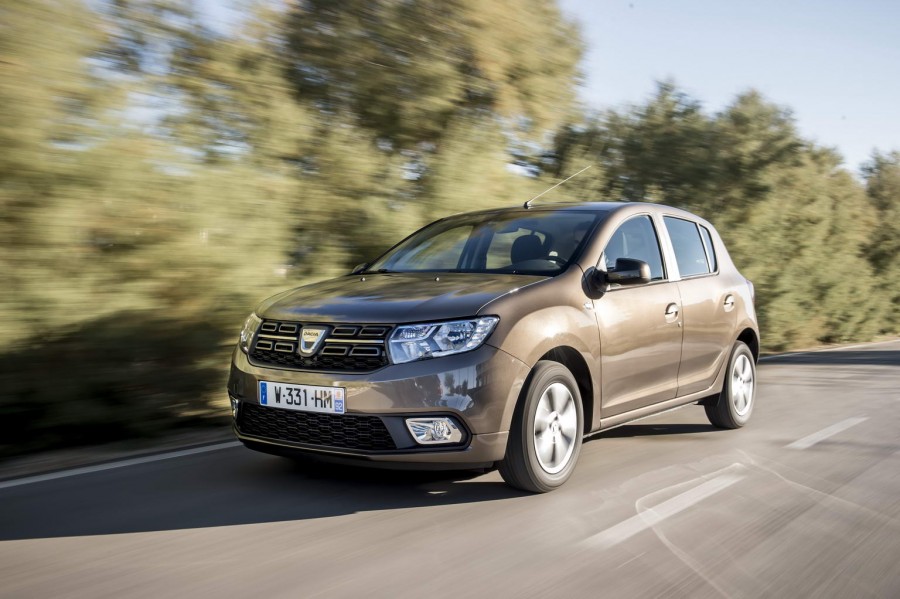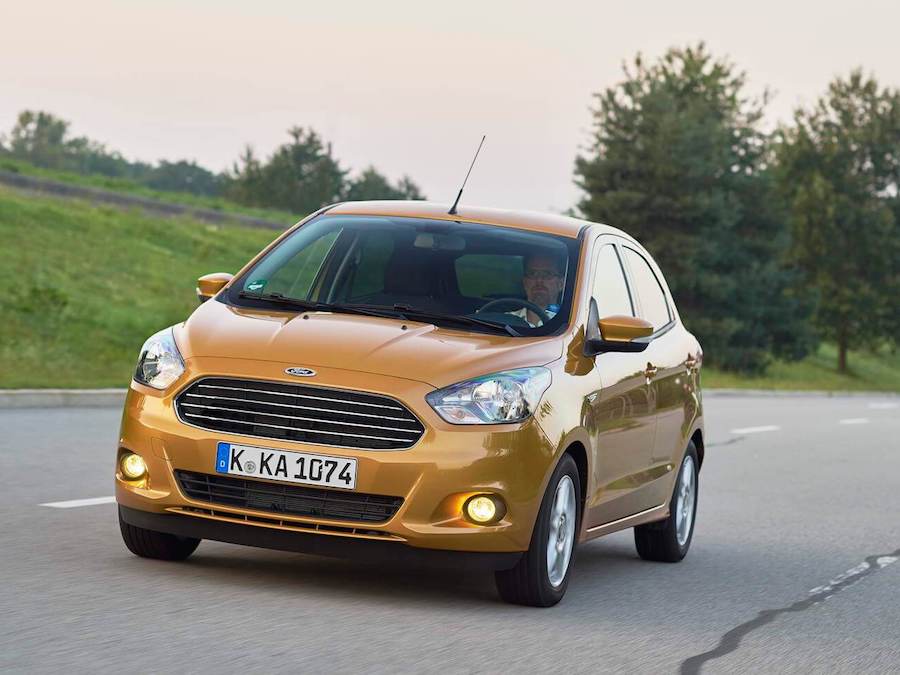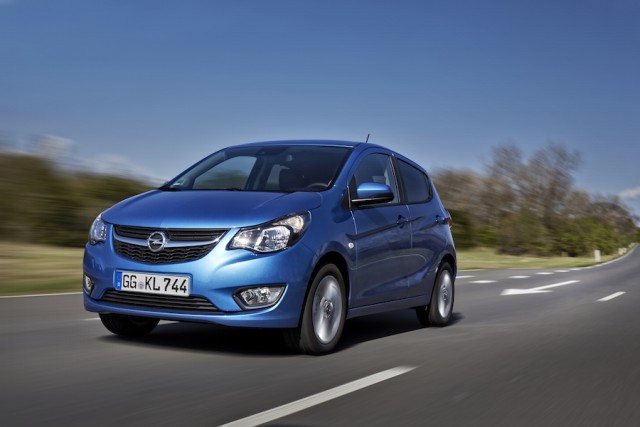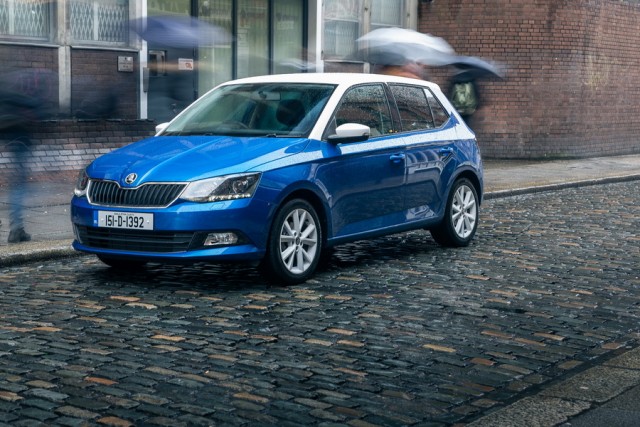Dacia facelifts the super-value Sandero hatchback and attempts to improve the interior ambience to make this bargain new car more enticing to the sort of buyers who might otherwise be looking at a second-hand Volkswagen Golf. There's also a three-cylinder normally aspirated petrol engine added to the line-up, but the Sandero still represents no-frills, thrill-free motoring. So if that's what you're after from a 171-plate car, look no further.
In the metal
Dacia has tidied up the look of the Sandero, along with its rugged off-road Stepway version and the Logan MCV estate, as part of a range-wide series of upgrades. You'll therefore spot the 2017 model year Sandero courtesy of its 'quad-rectangles' light signatures front and rear, as well as more chrome detailing at each end of the car, a new radiator grille, revised daytime running lights and a selection of fresh colours and alloy wheel designs across the board. Nothing transformative and what you're left with is a pretty ordinary hatchback - although, crucially, it's a big pretty ordinary hatchback for the money, which has always been the Sandero's party piece.
Similar primping has happened inside, with more chrome highlights, a new steering wheel (that, on the range-topping Signature version, comes in a 'Soft Feel' finish that's most agreeable to the touch), updated upholstery designs and some additional equipment on all trims, with air conditioning being thrown in for mid-ranking Alternative specification cars and the seven-inch MediaNav infotainment and reversing sensors making an appearance on the Signature models. This equipment loading is all well and good, although we can't help feeling that the Sandero makes most sense in minimal list price, Avis rent-a-car bog basic specification; adding fripperies to it only pushes the cost up to a level that could otherwise see you in a decent Volkswagen up! or similar, and no amount of shiny trinkets can hide either the flimsy, utilitarian plastics used to make up the Sandero's dash and door cards, nor the dated switchgear from Renaults of the 2003 vintage.
The biggest news for the Sandero range, then, is the addition of this SCe 1.0-litre three-cylinder petrol engine, badged 75, but actually delivering 73hp and 97Nm of torque. It's said to be up to 10 per cent more efficient than the old 1.2-litre, four-cylinder it replaces, but if you still need a little more thump, then the turbocharged TCe 90 petrol and dCi 90 diesel powerplants continue to be offered in the Sandero.
Driving it
The Dacia Sandero drives in a completely ordinary fashion, but come on, what were you expecting from what is essentially an old, repurposed Renault Clio built down to a cost? That the Sandero has a recalcitrant five-speed gearbox, moderate brakes and strangely hefty yet uninformative steering is not really a surprise. You won't find a shred of enjoyment in driving it fast, as there's quite a lot of body lean during cornering, while the new 1.0-litre engine is one of those tiny normally aspirated units that doesn't like venturing anywhere near the revs per minute at which peak horsepower is made - it starts to sound pained and feel wheezy beyond maximum torque, so if you're pushing it past 4,000rpm trying to exit a tight junction into fast-flowing traffic, you just feel mechanically unsympathetic.
Not that it's a bad engine, though. And not that the Sandero 1.0 SCe is a bad car; far from it. Like its exterior looks and its interior finishing, the Dacia's dynamic experience is all about getting a job done, not about flashy showmanship, steering feel this or cornering vivacity that. Judged on that score - and mentally equipping the car with a 3,500rpm limiter, beyond which you must not venture - it's a great deal more likeable. By modern standards, refinement levels are average at best, as tyre roar is always evident and there's a mass of wind noise coming from what are, ironically, relatively puny door mirrors, but it'll actually sit at 110- to 120km/h on the motorway quite happily, while - like any three-cylinder petrol engine - it at least sounds characterful and charming at the lower revs in which you'll inevitably operate. The ride is sort of seven-out-of-ten stuff, perfectly fine for most needs if not the smoothest machine in the world, and the long and short of it all is that the Sandero is absolutely acceptable as a cheap means of transport that'll get you to wherever it is you're going, without you remembering anything about the journey that got you there.
What you get for your money
As the old used-car motoring cliché goes, a lot of car for the money. The Sandero still has the same sort of space and physicality as a large-ish B-segment motor, with only the recently launched Ford Ka+ getting close to rivalling it for interior room at the same sort of cost. A Skoda Fabia would feel about as commodious as the Dacia, but that now feels like it's in another league for quality and fitments. Nevertheless, the addition of the extra equipment on the Dacia and the ability to extend the manufacturer's standard three-year/100,000km warranty to five years of cover for a nominal €369 fee still make it the ultimate bargain in new-car motoring here in Ireland.
Summary
Nothing fancy from Dacia once again, as the revised Sandero is an unprepossessing sort of car for people who just need a form of personal transport that isn't a bicycle. If you need some excitement or genuine interior quality in your life, this five-door machine is not the vehicle for you, and never will be no matter how much we tell you it's a car that meets its design brief in every single detail. However, if you require lots of space, decent kit levels and reasonable driving manners at normal road speeds, there's little the Sandero 1.0 SCe does wrong when measured by such yardsticks. So despite its mediocre overall rating, we find ourselves liking the Sandero's refreshing honesty - which would be best sampled with the Dacia in entry-level specification.










































